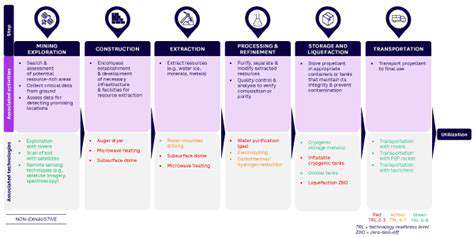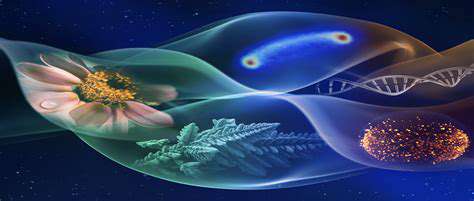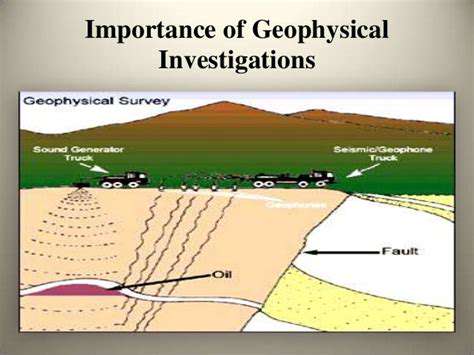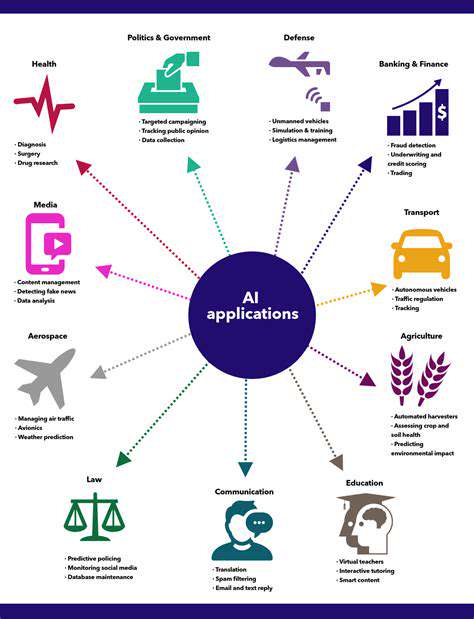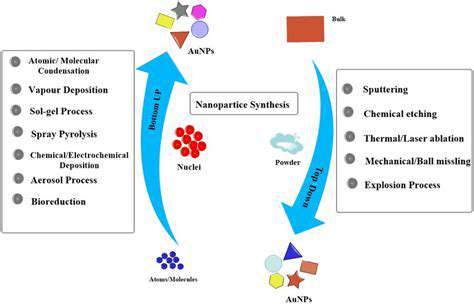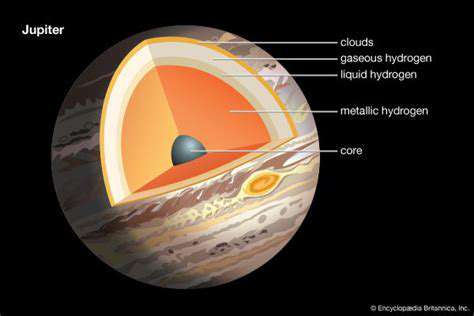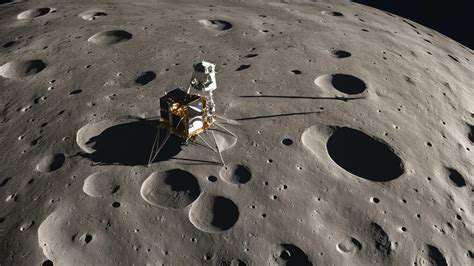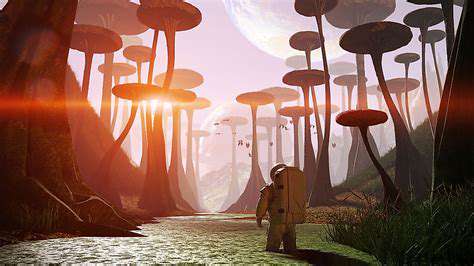High-Resolution Imaging: A New Perspective on Mars
The Mars Global Surveyor (MGS) mission marked a turning point in planetary science by delivering remarkably detailed images of the Martian surface. This unprecedented visual data enabled scientists to study surface features with extraordinary precision, revealing new insights about the planet's geological evolution and potential habitability. The capability to observe fine details like canyon networks, impact craters, and volcanic structures proved invaluable for deciphering the planetary processes that shaped Mars over eons.
Pre-MGS imagery provided only coarse views of Mars. While useful for broad surveys, these low-resolution pictures lacked the necessary detail to interpret complex geological formations that might hold answers about the planet's development. High-definition imaging enabled identification of specific mineral deposits, sedimentary strata, and other indicators of ancient environments.
Orbiting the Red Planet: MGS's Unique Position
MGS's carefully calculated orbit and advanced imaging systems were fundamental to its success. By maintaining optimal altitude and trajectory, the spacecraft captured comprehensive imagery of Mars' entire surface, producing the first complete global map. This enabled detection of planetary-scale patterns and regional geological variations.
Sustained orbital stability was critical for accumulating extensive datasets. This continuous observation permitted monitoring of seasonal variations and long-term geological changes, offering a holistic view of Mars' dynamic systems.
Unveiling Martian Canyons and Volcanoes
MGS's high-resolution cameras revealed breathtaking details of Martian canyons like Valles Marineris, exposing their staggering scale and intricate formations. These images allowed researchers to study the erosional processes that carved these massive features, potentially revealing clues about historical water activity. The mission also delivered crucial data about Martian volcanoes, documenting their dimensions, morphologies, and evidence of past eruptions.
Examining Impact Craters: Clues to Martian History
Martian impact craters serve as chronological markers in the planet's geological record. MGS's detailed imagery enabled close examination of crater characteristics including dimensions, shapes, and ejecta distribution. These observations helped date various surface regions and reconstruct the history of cosmic impacts over Martian geological time.
Mapping Martian Surface Composition: Identifying Minerals
Using advanced imaging spectroscopy, MGS mapped the mineral composition across Mars' surface. By analyzing spectral signatures, scientists could identify various minerals and rock types. These findings proved essential for understanding the chemical processes that shaped the planet's surface and locating areas that may have contained liquid water in the past.
The detection of hydrated minerals like sulfates and clays provided strong evidence for historical water presence, supporting theories that Mars once hosted more habitable conditions.
Understanding Martian Climate and Seasons
MGS's extended operational period allowed comprehensive study of seasonal variations. High-resolution imaging tracked changes in atmospheric conditions and surface features throughout the Martian year. This data significantly advanced understanding of the planet's climate system, including dust storm patterns, polar cap fluctuations, and atmospheric pressure changes.
The Legacy of MGS: Paving the Way for Future Missions
The Mars Global Surveyor's imaging capabilities and extensive data collection revolutionized Mars science. Its discoveries established foundational knowledge that guided subsequent missions, inspiring ongoing exploration and research. The detailed maps and images produced by MGS remain invaluable resources for scientists studying the Red Planet.
Beyond academia, MGS's legacy includes sparking public imagination and fostering widespread appreciation for planetary science and space exploration.
Exploring international cuisine opens a world of culinary discovery, where each dish carries the essence of its cultural heritage. Imagine starting your day with the aromatic spices of Indian chai or the delicate flavors of a Japanese omelette. These morning rituals transcend mere sustenance - they offer sensory journeys across continents before you've left your breakfast table. What begins as a simple meal evolves into a cultural education, revealing how societies express identity through their food traditions.
Unveiling the Mysteries of Martian Atmosphere and Climate
Exploring Martian Atmospheric Composition
The Martian atmosphere, significantly thinner than Earth's, contains vital information about the planet's climatic history and potential for life. Analysis of its primary constituents - carbon dioxide, nitrogen, and argon - forms the foundation of atmospheric research. Scientists employ various instruments to measure pressure gradients, density variations, and temperature profiles across different altitudes, building a multidimensional understanding of this complex system. Deciphering atmospheric-surface interactions and gas dynamics is crucial for reconstructing Mars' climate evolution.
Trace atmospheric components, though present in minute concentrations, may hold profound significance. Elements like methane or water vapor could indicate geological processes or even biological activity. Detecting and analyzing these trace gases presents substantial technical challenges requiring highly sensitive instrumentation. This research is pivotal for determining whether Mars ever maintained a warmer, wetter climate or has always been the frozen desert we observe today.
Investigating Martian Climate Variations
Mars experiences significant climatic fluctuations over geological timescales, driven by orbital variations and solar activity changes. These cyclical patterns influence seasonal changes, polar cap dynamics, and the behavior of massive dust storms. Analyzing these variations through mission data is essential for understanding the planet's long-term climate trajectory.
The Martian climate system demonstrates complex interconnections. Planet-encircling dust storms, for instance, dramatically alter atmospheric circulation and thermal properties. These events, a defining feature of Martian weather, illustrate the intricate relationships between atmosphere, surface, and polar regions. Modeling these interactions is crucial for developing comprehensive climate models.
The Role of Martian Dust Storms
Dust storms represent a hallmark of Martian meteorology. These massive atmospheric disturbances can fundamentally transform the planet's atmospheric properties, affecting temperature distributions, pressure systems, and aerosol dispersion. Understanding storm development, duration, and global impacts is critical for deciphering Martian climate mechanics.
The Impact of Solar Activity on Martian Climate
Solar phenomena significantly influence Martian atmospheric conditions, much like on Earth. Variations in solar radiation and the solar wind can modify upper atmospheric temperatures and contribute to atmospheric escape. Studying solar-Mars climate relationships is essential for understanding long-term atmospheric evolution and potential atmospheric loss over geological time. This research helps determine whether Mars' atmosphere has been primarily lost to space or absorbed into planetary reservoirs.
The Search for Evidence of Past Water on Mars
A primary objective in Martian atmospheric research involves establishing historical evidence for liquid water. Indicators like ancient river valleys, lake beds, or possible ocean basins could confirm periods of warmer, wetter conditions. Analysis of atmospheric isotopes and surface mineralogy plays a crucial role in this investigation, which forms a key component in the broader search for past Martian habitability.
The Significance of Studying Martian Climate for Earth
Martian climate research offers valuable comparative insights for understanding Earth's climate system. Studying atmospheric escape mechanisms and dust storm dynamics provides analogs for potential Earth climate scenarios. This planetary comparison enhances our comprehension of climate change factors on global scales, potentially improving Earth climate modeling and long-term environmental forecasting.
A Legacy of Discovery: Continuing to Inspire

Unveiling the Past:
True discovery involves more than cataloging historical artifacts; it's a dynamic process of reconstructing and interpreting bygone eras. This meticulous work involves assembling fragmented narratives, comprehending our predecessors' motivations and experiences, and ultimately gaining deeper perspective on human history. Such endeavors demand rigorous research, analytical precision, and willingness to challenge established paradigms.
Historical exploration provides crucial context for modern challenges. Learning from past achievements and failures equips us to make wiser decisions and navigate contemporary complexities. Historical lessons offer invaluable frameworks for understanding intricate social, political, and economic issues.
The Role of Innovation:
Discovery remains inextricably linked to technological and methodological innovation. Cutting-edge technologies, novel approaches, and fresh perspectives continually reshape historical understanding. Archaeological techniques, genetic analysis, and advanced linguistic studies demonstrate how innovative methods uncover new knowledge and challenge conventional interpretations.
Our ever-evolving investigative tools enable deeper historical exploration than previously imaginable. This commitment to innovation ensures our historical knowledge remains dynamic, continuously refined by new discoveries and perspectives.
Preserving the Future:
Historical preservation constitutes an essential component of the discovery process. This involves meticulous documentation, artifact conservation, and creation of accessible educational materials to ensure knowledge transmission across generations.
Conservation efforts guarantee that hard-won discoveries remain available for future scholars to build upon. This vital work ensures historical knowledge retains its relevance while fostering public engagement with humanity's shared heritage.
Expanding Horizons:
Genuine discovery compels us to challenge assumptions and push knowledge boundaries. It cultivates intellectual curiosity and commitment to uncovering truth beyond conventional narratives. This exploration often leads beyond traditional historical frameworks, revealing new perspectives that enrich our collective understanding.
By embracing the unknown and questioning established views, we unlock new dimensions of understanding and create more nuanced historical portraits. This relentless curiosity and dedication to exploration form the foundation of meaningful, enduring discovery.
